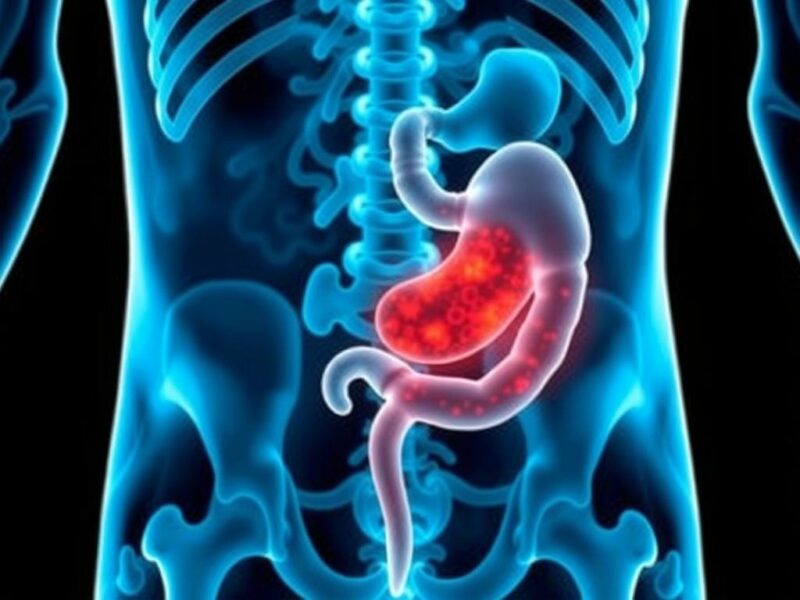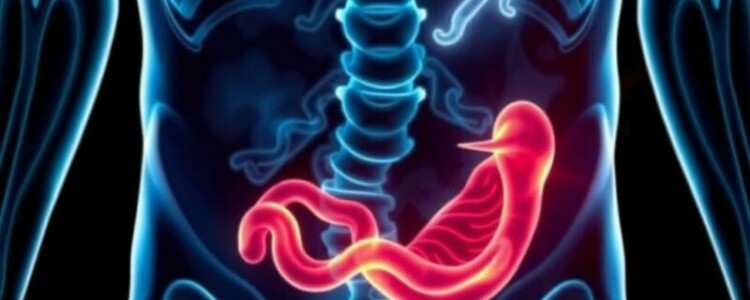Appendicitis and fever often go hand in hand, leaving many people wondering what this combination means, how serious it is, and when to get medical help. If you or a loved one experiences abdominal pain alongside a fever, it’s important to understand the connection and know what signs to watch for. This article will take you step by step through the causes, symptoms, and treatment options related to appendicitis and fever, helping you feel more informed and prepared.
What is Appendicitis?
Appendicitis is an inflammation of the appendix, a small, tube-shaped pouch attached to the large intestine. Although the appendix doesn’t have a clearly defined role in the body, its sudden inflammation can cause serious health issues. This condition typically requires prompt medical attention because a delayed diagnosis can lead to rupture, causing infection to spread throughout the abdomen.
People of all ages can develop appendicitis, but it is most common in teenagers and young adults. The exact cause often isn’t clear, but it usually occurs when the appendix becomes blocked by stool, swelling lymph tissue, or, in rare cases, a tumor. This blockage causes bacteria inside the appendix to multiply rapidly, leading to swelling, pus formation, and severe pain.
The Link Between Appendicitis and Fever
One of the hallmark signs of appendicitis is fever. When your body detects infection or inflammation, it triggers a fever as a defense mechanism, raising your body temperature to fight off invading bacteria. In the case of appendicitis, the fever indicates that your immune system is responding to the appendix’s inflammation.
Fever associated with appendicitis is often mild to moderate at first, ranging from 99°F to 102°F (37.2°C to 38.9°C). However, if the appendix ruptures, the fever can spike higher, signaling a more severe infection that requires immediate medical intervention.
Symptoms of Appendicitis and Fever
Recognizing symptoms early is crucial. Appendicitis can be tricky to diagnose because its symptoms sometimes mimic other conditions like gastrointestinal infections or bladder problems. However, certain combinations of symptoms—especially fever coupled with abdominal pain—should raise suspicion.
Below is a table that outlines common symptoms often seen in appendicitis patients experiencing fever.
| Symptom | Description |
|---|---|
| Sharp Abdominal Pain | Often starts near the navel and shifts to the lower right abdomen |
| Fever | Usually mild initially but can increase if the appendix ruptures |
| Nausea and Vomiting | Often develops shortly after the pain starts |
| Loss of Appetite | Common early symptom that leads to reduced food intake |
| Swelling or Tenderness | Abdominal area, especially when pressed |
| Constipation or Diarrhea | Possible due to digestive system upset |
Why Does Fever Accompany Appendicitis?
Fever in appendicitis arises because your immune system detects the dangerous bacteria multiplying within the blocked appendix. As your white blood cells rush to fight this infection, inflammation leads to chemical signals being released, which tell the brain to increase your body temperature. This increase helps inhibit bacterial growth, but it also causes you to feel chills, sweating, and general malaise.
It’s important to remember that not everyone with appendicitis will have a fever immediately. Some people might experience abdominal pain first and develop a fever later. This variability is why doctors take a comprehensive look at all symptoms when determining the diagnosis.
When is Fever a Red Flag in Appendicitis?
While a mild fever is normal, certain features should raise immediate concern:
- High fever above 102°F (38.9°C) indicates severe infection
- Persistent fever lasting more than 24 hours without improvement
- Fever accompanied by worsening abdominal pain
- Signs of ruptured appendix such as sudden relief from pain followed by increased pain, fever spike, and severe illness
Being aware of these red flags can save lives because a ruptured appendix can lead to peritonitis, a life-threatening infection of the abdominal lining.
How is Appendicitis Diagnosed?

If you visit a healthcare provider with abdominal pain and fever, expect them to conduct a thorough evaluation to confirm or rule out appendicitis. The diagnosis usually involves:
Physical Examination
Doctors will check for tenderness in the lower right abdomen, especially when pressing and releasing pressure—a technique called rebound tenderness. They might also test for guarding (involuntary muscle tightening) or the presence of the “psoas sign,” where pain is triggered by specific movements.
Laboratory Tests
Blood tests are common to check white blood cell count, which tends to be elevated when fighting an infection like appendicitis. Urinalysis might be done to exclude urinary tract infections or kidney stones, which can mimic appendicitis symptoms.
Imaging Studies
Imaging is often necessary to get a clear picture. These can include an ultrasound, especially in children and pregnant women, or a CT scan, which offers detailed clarity on the appendix’s size and any surrounding inflammation.
Treatment Options for Appendicitis and Fever
Once diagnosed, treatment aims to remove the inflamed appendix and manage the infection.
| Treatment | Description | When It Is Used |
|---|---|---|
| Surgery (Appendectomy) | Removal of the appendix, either laparoscopically or through open surgery | Main treatment for most cases |
| Antibiotics | Used to treat infection and sometimes to delay or avoid surgery | Early stages or when surgery is not immediately possible |
| Pain Management | Medications to control pain and reduce fever | Supportive care before and after surgery |
Appendectomy: The Gold Standard
Surgical removal of the appendix is typically the preferred route, as it definitively treats the inflammation, lowers the risk of rupture, and shortens overall recovery time. Minimally invasive laparoscopic surgery is commonly used, which involves small incisions and faster healing.
Antibiotics as a Treatment Option
For some patients—especially those who are not good surgical candidates or cases caught very early—doctors may try antibiotics alone. This approach works for some, but there is a higher chance of recurrence, which means surgery might still be necessary down the line.
How Fever Should Be Managed During Appendicitis
Fever management is mostly supportive; it involves keeping hydrated, resting, and using fever reducers like acetaminophen or ibuprofen. However, it’s important to avoid masking symptoms for too long. If the fever doesn’t go down or is very high, revisit your healthcare provider right away.
Tips to Monitor Fever at Home
- Measure body temperature regularly with a reliable thermometer
- Note any changes in fever intensity along with other symptoms
- Stay hydrated and avoid heavy meals
- Seek immediate medical care if fever exceeds 102°F or if you experience sudden changes in pain
Possible Complications When Appendicitis and Fever Are Left Untreated
If appendicitis and its accompanying fever aren’t treated promptly, serious complications can develop:
- Ruptured Appendix: Causes intense abdominal infection and spread of pus (peritonitis).
- Abscess Formation: A collection of pus forms around the appendix, which sometimes requires drainage.
- Sepsis: A systemic infection that can lead to organ failure and is life-threatening.
These complications highlight why it’s crucial not to ignore the symptoms of appendicitis, especially when fever is present.
Common Misconceptions About Appendicitis and Fever
There are a few common myths that can complicate recognizing appendicitis:
- Myth: Fever must be very high to indicate appendicitis.
Truth: Fever can be mild and still significant. - Myth: Appendicitis pain is always severe and sudden.
Truth: Pain can start mild and gradually worsen. - Myth: Only children or teenagers get appendicitis.
Truth: It can affect adults too.
Understanding these facts can prevent delays in seeking care.
When to Visit the Doctor Immediately
If you or someone you know experiences any of the following along with fever, it’s time to get medical attention without delay:
- Severe abdominal pain, especially in the lower right side
- Fever above 102°F (38.9°C), chills, or sweating
- Persistent vomiting or inability to keep fluids down
- Sudden relief of pain followed by worsening discomfort
- Swelling or hardness in the abdomen
Early diagnosis and treatment make the best difference in recovery outcomes when dealing with appendicitis and fever.
Summary of Key Points About Appendicitis and Fever
| Aspect | Key Information |
|---|---|
| Cause | Inflammation due to obstruction and bacterial infection in appendix |
| Common Symptoms | Abdominal pain, fever, nausea, loss of appetite |
| Role of Fever | Indicator of infection and immune response |
| Diagnosis | Physical exam, lab tests, imaging studies |
| Treatment | Generally surgical removal, with antibiotics as adjunct or alternative in some cases |
| Urgency | Prompt treatment needed to avoid complications |
Conclusion
Appendicitis and fever together paint a clear picture of an underlying infection that needs careful evaluation. While fever is your body’s natural response to the inflamed appendix, it also signals the presence of a dangerous condition that should never be ignored. Understanding the symptoms, knowing when to seek help, and appreciating the urgency of treatment can save lives and minimize painful complications. If you experience persistent abdominal pain coupled with fever, don’t hesitate—consult a healthcare professional promptly to ensure the best possible outcome. Staying informed and attentive to your body’s signals is the key to managing appendicitis and fever safely and effectively.



